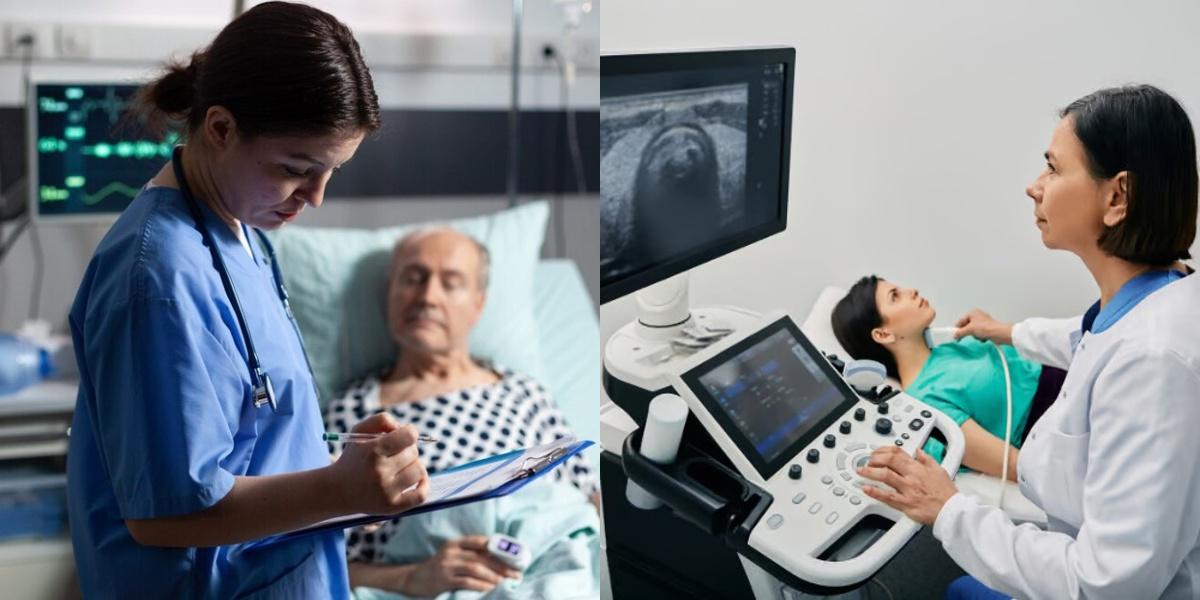Acute Care Nursing Assistant vs Diagnostic Medical Sonographer

The healthcare industry offers a variety of career paths for those interested in patient care. Two such roles are Acute Care Nursing Assistants (ACNAs) and Diagnostic Medical Sonographers. While both professions focus on patient well-being, they differ significantly in their job responsibilities, training, and work environments.
Diagnostic Medical Sonographer
- Perform diagnostic ultrasound examinations using specialized equipment.
- Explain procedures to patients and ensure they are at ease.
- Capture high-quality images and analyze them to identify potential issues.
- Share initial findings with physicians for diagnosis.
- Maintain accurate records and follow privacy regulations.
Education and Training Requirements
Acute Care Nursing Assistant
- Education: ACNAs complete a state-approved nursing assistant program, which typically takes a few months.
- Certification: CNAs must pass a competency exam to earn certification.
- Training: On-the-job training familiarizes CNAs with their specific work environment and the healthcare facility’s protocols.
Diagnostic Medical Sonographer
- Education: Sonographers typically complete a two-year associate degree in diagnostic medical sonography.
- Certification: Many employers require certification from the American Registry for Diagnostic Medical Sonography (ARDMS).
- Clinical Training: Sonographers gain hands-on clinical experience under the supervision of experienced professionals during their studies.
Career Outlook and Salary
Acute Care Nursing Assistant
- Job Growth: The Bureau of Labor Statistics (BLS) projects that employment of nursing assistants will grow by 4% from 2023 to 2033.
- Salary: The median annual wage for nursing assistants was $38,200 in May 2023, with top earners earning more than $41,000.
Diagnostic Medical Sonographer
- Job Growth: The BLS projects an 11% growth in employment for diagnostic medical sonographers from 2023 to 2033, driven by advancements in diagnostic technology.
- Salary: The median annual wage for sonographers was $84,470 in May 2023, with the top 10% earning over $106,000.
Final Thoughts
Both Acute Care Nursing Assistants and Diagnostic Medical Sonographers play essential roles in the healthcare system, contributing to patient care and well-being. The decision between these two career paths depends on your interests and strengths:
- If you’re drawn to direct patient care and enjoy assisting with daily activities and vital signs, a career as an Acute Care Nursing Assistant might be the right fit.
- If you prefer working with advanced technology and contributing to diagnosis through medical imaging, becoming a Diagnostic Medical Sonographer may be a rewarding path.
Each field has its own unique set of challenges and rewards, and both offer opportunities for career advancement. Take your time to assess your interests, training requirements, and long-term career goals when making your decision.
To learn more about these two vocations and explore training programs near you, check out the following resources:
Choosing the right healthcare career is an exciting step, and both these professions offer rewarding opportunities to make a difference in patients' lives.

Alyssa Jane is part of the customer success team at Dreambound. She works with students, training providers, and employers, helping them have a smooth customer journey. She is also an ESL tutor and Licensed Psychometrician. She is fond of traveling, photography, and discovering new restaurants.



